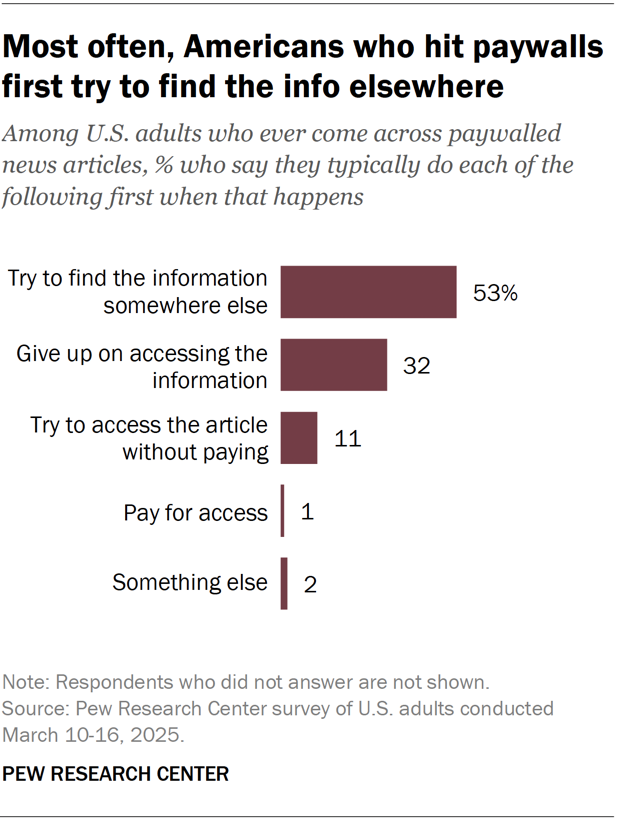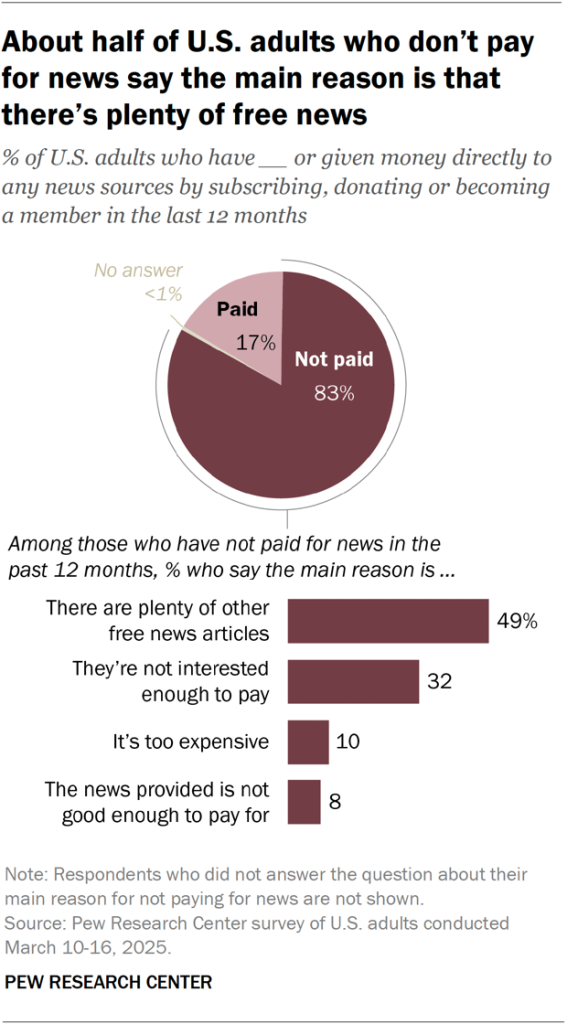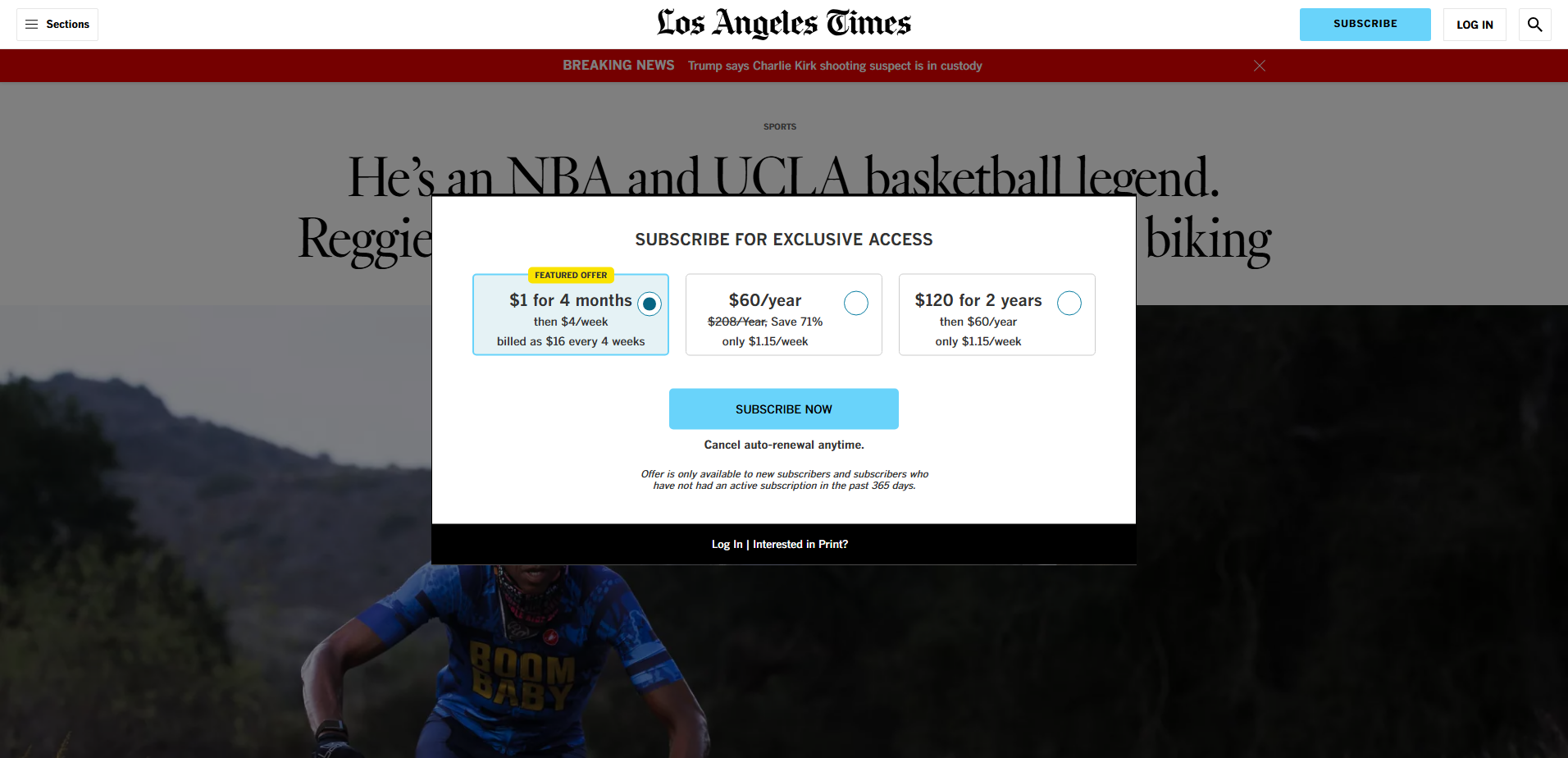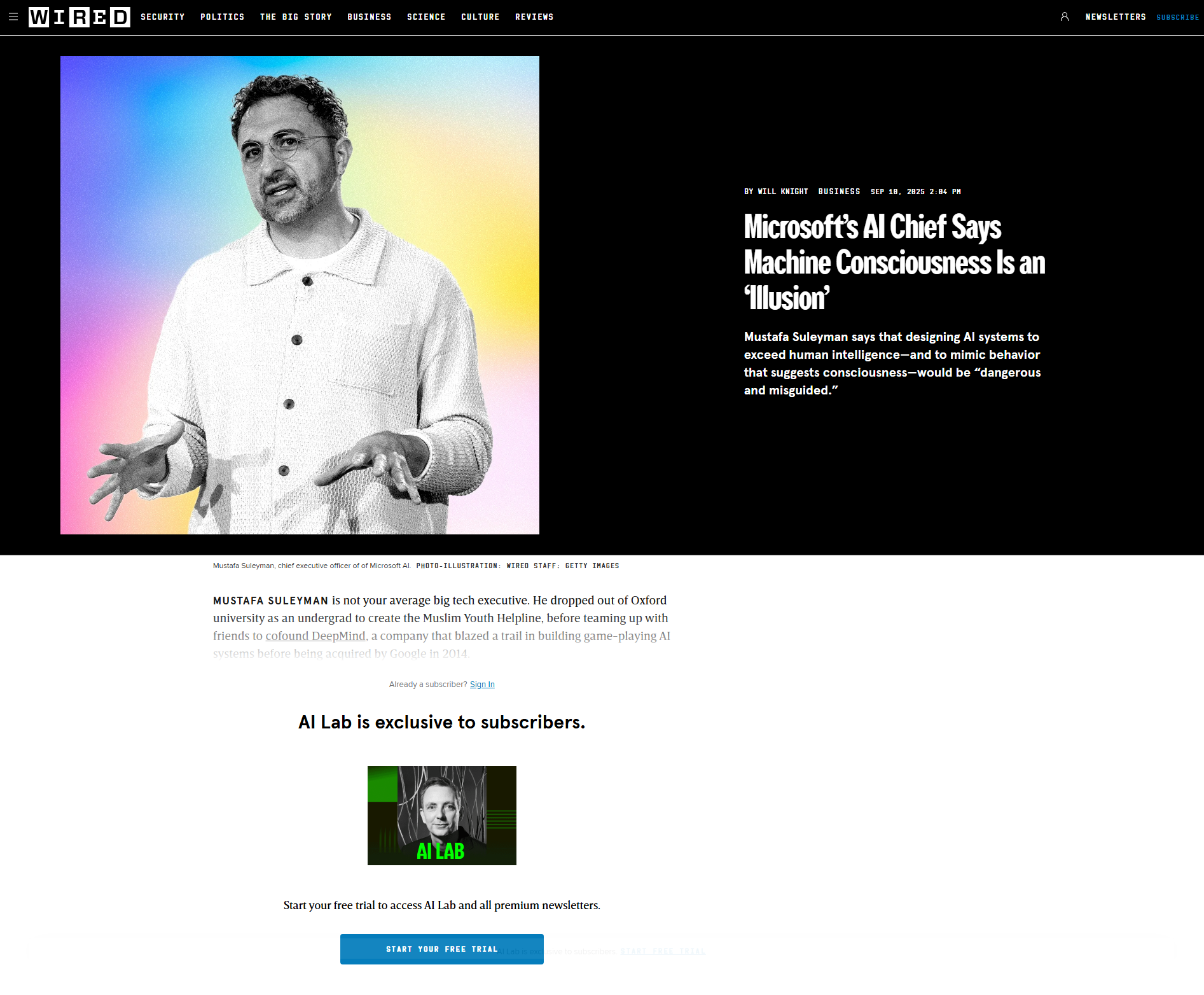Another ‘SEO is Dead’ Scene… And It’s The Open Web This Time
-

Jonas Trinidad
- Blogs
-
 November 04 , 2025
November 04 , 2025 -
 10 min read
10 min read
In case you missed it, Google narrowly avoided a breakup, similar to that of Standard Oil.
The Big G’s drawn-out antitrust trial ended several days ago when the U.S. District Court for the District of Columbia ruled in favor of the company’s proposal. In exchange for being allowed to keep Android and Chrome, the company must share its data with competitors. Also, it can no longer sign deals that make its products the default on mobile devices. (1)
Had the breakup pushed through, it would’ve been the largest corporate dissolution in U.S. history, valued at USD$2.5 trillion at the time. By comparison, Standard Oil was estimated to be worth USD$1 trillion (adjusted for inflation, based on the total value of all its assets at the time) years prior to its breakup in 1911. (1)(2)
But you probably didn’t come here to witness me geek out over economics—or, if you did, this is hardly the place. You came here for anything that’ll impact SEO, and I shall deliver.
In a court filing submitted on September 5, Google stated:
“The fact is that today, the open web is already in rapid decline and [the Justice Department’s] divestiture proposal would only accelerate that decline, harming publishers who currently rely on open-web display advertising revenue.”
It sounds scarier than it is because “open web” in this context refers to open-web display advertising, which is essentially ads on websites. Regardless, you can’t afford to be vague or misunderstood in a legal document. If not for someone pointing out the confusion (and already notifying the court), someone reading this would understandably be freaked out.
That said, let’s perform a thought experiment. What if Google really meant what it said in the filing? What if the open web is dying…or dead?
The State of the Internet
Good news: the Internet’s in great shape. We have misinformation running rampant, hackers stealing billions worth of personal data, and organic clicks at the mercy of AI.
And the bad news? This is sarcasm.
I don’t need to go over each of these issues in great detail, as they’re common enough to give anyone a decent picture. This status quo isn’t even lost on the father of the Web, Tim Berners-Lee, who acknowledges the wide range of issues but still commits to the fight for a “free, open, and creative” Internet. (3)
But let’s break that down, shall we? Because, as it stands, it seems as if it’s a losing fight.
Free Internet vs. Paywalled Content
Daniel Saroff, vice president for consulting and research at IDC, stated that websites have been struggling to stay afloat on ad revenue alone. The shift to social media platforms such as TikTok and YouTube represents a favoring of engagement over visibility. After all, people visit these sites more to discover interesting things and less to find a brand.
However, it isn’t without consequence. Major publishers can still rely on website ads and absorb the losses, but small and niche sites are forced to seek alternative revenue sources. They started adopting a paywall model, locking content behind a subscription. Examples include (but aren’t limited to) research publishers and news sites. (4)
Needless to say, locking content behind a paywall doesn’t sit well with many consumers. A Pew survey of roughly 9,500 U.S. adults conducted last March revealed that only 1% stated willingness to pay to unlock paywalled news articles.

Source:Pew Research Center
Despite overwhelming dismay, many websites are still moving toward a paywall business model. In August, the New York Times decided to lock its popular mini-crossword game behind a USD$2 monthly subscription (though it offers USD$1 for all access). Many long-time players were unhappy. (5)
Open Internet vs. Zero-Click Search
Google’s rollout of AI-generated summaries for search results has stirred a hornet’s nest, especially among publishers. While its convenience for users is undeniable, it takes away the need to visit webpages to learn more. Pew confirmed this in another survey last July, which I also cited in my post about the risk of model collapse.
DMG Media, a multimedia company that owns several British news outlets, including the Daily Mail, stated that AI Overviews (AIO) caused a click-through rate (CTR) decline of up to 89% among links to several Daily Mail articles.

Data source: DMG Media
Meanwhile, Digital Content Next (DCN), a trade organization whose members reach 95% of the U.S. population, reported a 10% decline in its members’ median year-over-year referral traffic in eight weeks. The worst weeks were May 25 for news brands, which posted a 16% drop, and June 22 for non-news ones, which logged a 17% decline. (6)
DCN also stated that there is a widening gap in advertising revenue between Google and its members. The split increased in favor of Google from 70/30 in 1Q 2013 to 90/10 in 2Q 2024, as zero-click search locks users within Google’s ecosystem. Every point of search traffic lost to AI, DCN said, squeezes its members’ budget for entertainment and journalism. (6)
Creative Internet vs. AI Slop
The Internet is filled with so much AI-generated content that we’re having trust issues every time we view an image or video. Nothing hurts artists’ feelings more than false accusations of using AI to draw a piece that took hours or even days to make.
I know this feeling all too well. AI detection tools have flagged anything I write as AI despite evidence to the contrary. Sometimes, I’d look down at my hands and say, “Maybe I am AI.”
Despite the ethical conundrum, the revenue potential of generative AI is making it too hard to let go. In an interview with NPR, a content creator based in the Philippines who creates AI-generated videos of kittens said he earned USD$9,000 in ad revenue last May. His tools of choice are ChatGPT for rendering the characters and Kling AI for generating the video. (7)
As of this writing, his YouTube channel has roughly 600,000 subscribers, and his videos have accumulated close to 500 million views. (7)
Not all AI content is as cute and cuddly as kittens, though. In one case, the BBC tracked down the source of AI-generated images of Holocaust victims recently making the rounds to a network of content creators based in Pakistan. One Facebook account linked to this network claimed it earned USD$20,000, although the reporters were unable to verify this. (8)
Another individual also linked to the network, whom the BBC was able to interview, stated that a Facebook page posting “premium content” could generate as much as USD$1,000 per month. He also told reporters that historical topics are major traffic drivers. (8)
Admitting that AI-generated content won’t go away anytime soon is one thing, but calling for responsible use is another. The existence of low-effort AI is a slap in the face, not just to those who spent years honing their craft, but also to anyone they may have upset with it.
The Fight Isn’t Over
Good news—no sarcasm this time—is that users are still fighting for a better Web. The fact that interest groups and journalists are still able to raise awareness about issues regarding the status quo is proof of that.
That said, awareness is nothing without action.
Remember that earlier Pew study about paywalled content? There’s another graph there that reveals a stunning fact: the majority of Americans, at least, haven’t paid a penny for access to news content over the last 12 months. The main reason is that plenty of other free sources still exist on the Web.

Source: Pew Research Center
And in some instances, public pressure is paying off. Some news sites are posting news of public emergencies free of charge, like the Los Angeles Times during the January wildfires that razed thousands of homes. The Nieman Foundation at Harvard reported that the site’s 30-day average traffic surged eightfold, and new subscriptions increased by over 259%. (9)
Others are taking it one step further, such as Wired’s decision in March to offer free access to stories based on public records. This statement by the Freedom of the Press Foundation effectively summarises the pros and cons of the decision.
“…while some readers might not subscribe to outlets that give away some of their best journalism for free, it’s just as possible that readers will recognize this sacrifice and reward these outlets with more traffic and subscriptions in the long run.”
The potential to achieve Berners-Lee’s vision remains. It all boils down to thinking less about the cost of producing quality content and more about the consumer who’ll benefit from reading it. People today aren’t stupid; they’ll catch on soon enough if you waste their time with low-effort content.
Does this mean giving up AI and other advantages? Not necessarily.
Note that neither The Los Angeles Times nor Wired has given up its respective paywall model. Some content still requires a subscription, which is a reasonable compromise to sustain business operations. Then again, they have to be aware of the disadvantages and carefully choose what’s free of charge and what costs a couple of dollars a month.


As for AI, it’s dangerous to think that the technology is perfect as is. In fact, it’s dangerous to think that technology is perfect. There may come a time when we can comfortably leave tasks to AI, but it’ll still need human input in the meantime.
Only One ‘Open Web’
I stated before that SEO can’t die but undergoes change. The SEO of today may be different from that of last year or 10 years ago, but it’s still known as SEO. As long as search engines remain relevant, SEO can’t die.
The same can’t be said for the open Web, especially with all these efforts to close it. A lack of regulation sets a dangerous precedent, from residents not being notified of disasters to businesses losing money and relevance. If these trends become the new norm, there’s no calling this future the new “open web.”
There’s only one open web—Berners-Lee’s Web—and it’s up to us to keep it that way.
References
1. ‘Google dodges a $2.5T breakup,’ Source:https://www.politico.com/news/2025/09/02/google-dodges-a-2-5t-breakup-00540419
2. ‘5 of the richest companies in history,’ Source:https://bigthink.com/the-present/5-of-the-richest-companies-in-history/
3. ‘’The web is under threat’: Tim Berners-Lee on making the web work for everyone,’ Source:https://www.britishcouncil.org/anyone-anywhere/explore/dark-side-web/tim-berners-lee
4. ‘Is the open web dying, and is AI partially to blame?’ Source:https://www.cio.com/article/3615680/is-the-open-web-dying-and-is-ai-partially-to-blame.html
5. ‘The New York Times’ Mini Crossword Goes Behind a Paywall — And Players Are Not Happy,’ Source:https://lamag.com/gaming/the-new-york-times-mini-crossword-goes-behind-a-paywall-and-players-are-not-happy/
6. ‘Facts: Google’s push to AI hurts publisher traffic,’ Source:https://digitalcontentnext.org/blog/2025/08/14/facts-googles-push-to-ai-hurts-publisher-traffic/
7. ‘’AI slop’ videos may be annoying, but they’re racking up views — and ad money,’ Source:https://www.npr.org/2025/08/28/nx-s1-5493485/ai-slop-videos-youtube-tiktok
8. ‘BBC reveals web of spammers profiting from AI Holocaust images,’ Source:https://www.bbc.com/news/articles/ckg4xjk1g1xo
9. ‘The L.A. Times sees subscriber bump during wildfire coverage, despite removing paywall,’ Source:https://www.niemanlab.org/2025/01/the-l-a-times-sees-subscriber-bump-during-wildfire-coverage-despite-removing-paywall/
Subscribe to Our Blog
Stay up to date with the latest marketing, sales, service tips and news.
Sign Up
"*" indicates required fields


